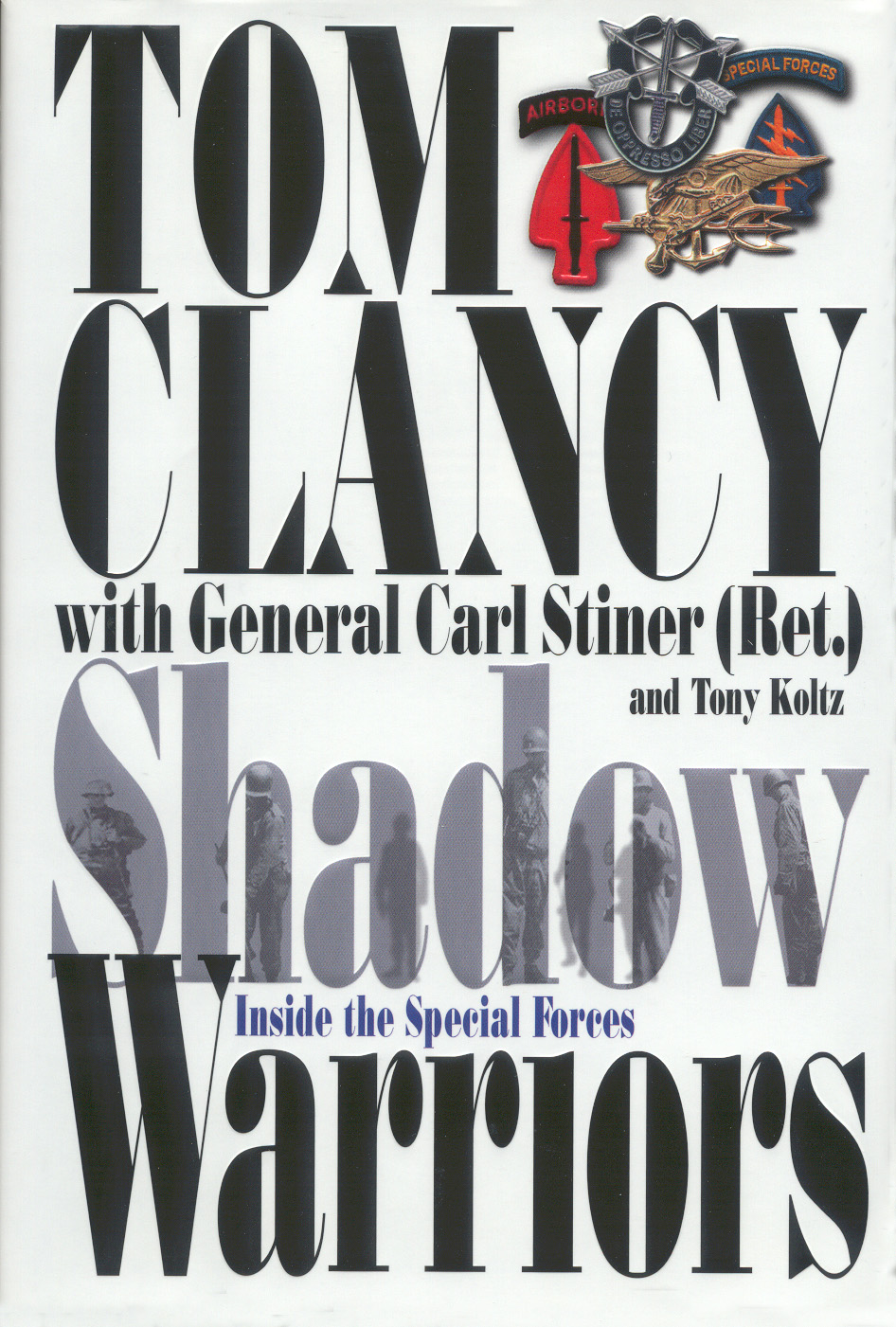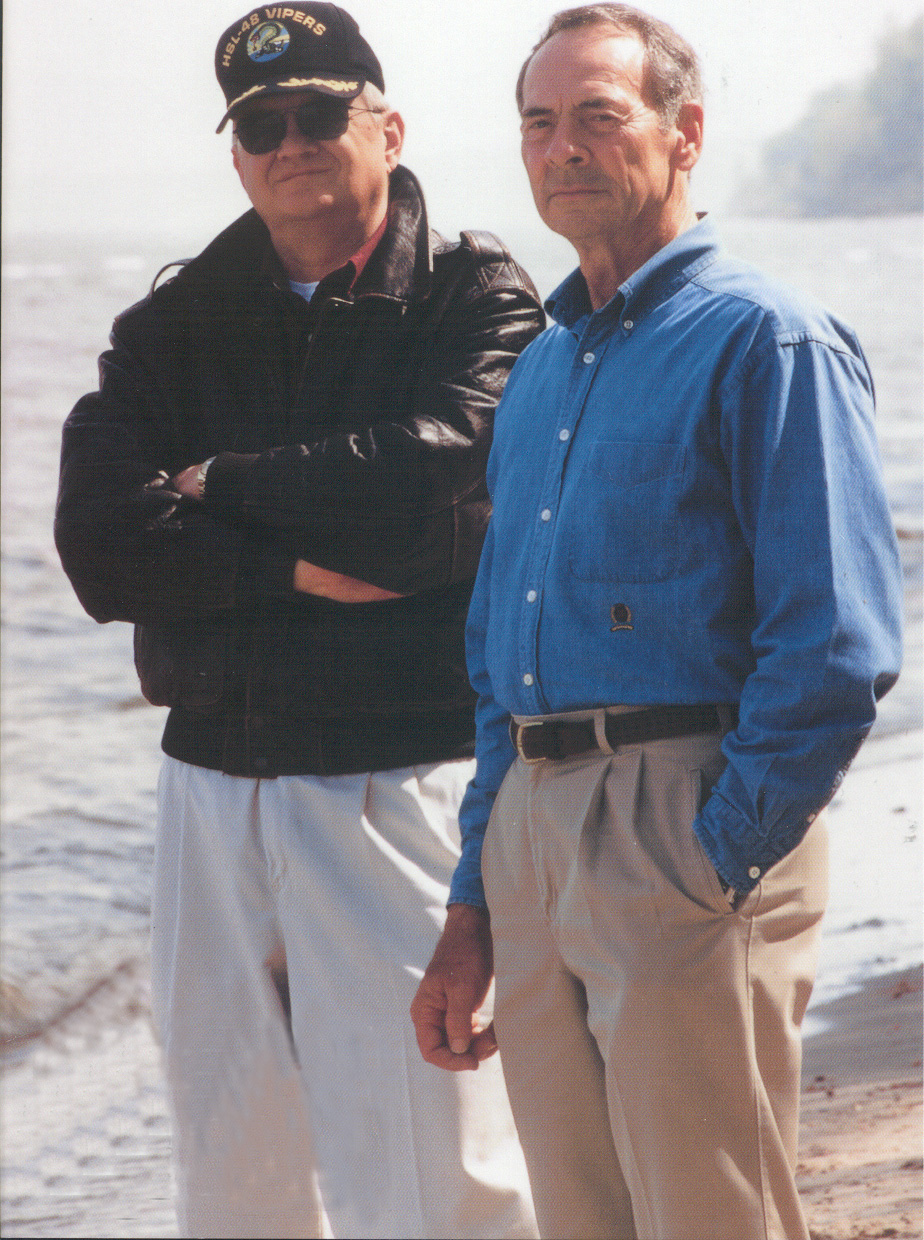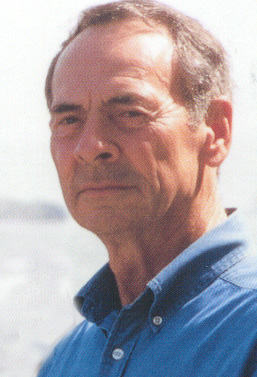

General Carl Stiner (Retired)


Shadow Warriors is the story of the Special Forces coauthored by General Stiner (Retired) the second Commander of the U. S. Special Operations Command.
 Carl Stiner on Leadership:
Carl Stiner on Leadership:
The following adaptation of the Appendix II of Shadow Warriors reflects the simple yet forceful and the proven effective as well as time tested personal leadership principles and techniques used by General Stiner during his long and successful military career. These leadership principles apply to all leadership situations!
Leadership
Based
upon Carl Stiner’s Appendix II of “Shadow Warriors”
By
Tom Clancy and Carl Stiner
Carl Stiner came into my
life through our joint involvement in America’s Promise and efforts to provide
science equipment to Campbell County Schools.
He gave the commencement address for the East Tennessee Regional
Leadership program where he spoke on some of the events of his military life in
light of the September 11, 2001 terrorist attack. The book he co-authored with Tom Clancy details many of his
unique experiences and dedicated leadership in the fight against terrorism the
world over. As Tom Clancy states in
the acknowledgements of “Shadow Warriors, Carl Stiner is “a quiet hero if
there ever was one, and a man you definitely want on your side.”
His calm and demurring
mannerisms belie the assurance with which he takes action and the quiet yet
forceful impact he has on everyone around him.
The insight into his thoughts on leadership shared in Appendix II of
“Shadow Warriors” is a rare glimpse into true leadership, true devotion to
duty, true love for one’s country and exceptional personal characteristics of
an American Hero who lives quietly in Campbell County, Tennessee yet who still
commands the utmost respect of world leaders.
The traits of leadership listed below come from the epitome of a tried
and true leader with extensive practical experience – General Carl Stiner
(Ret.).
The Army’s
institutionalized education system is a system uniquely designed to provide each
officer and noncommissioned officer the technical and tactical proficiency
necessary for every level of command. This
system is thought by General Carl Stiner (Ret.) to do the best-known job of
producing leaders. He is a product
of that system, and yet is the exception to the rule in that his leadership
ability goes beyond the system’s elite and finest leaders.
The Army’s system that
develops leaders considers every level and prepares leaders to move to the next
level of responsibility. The broad
scope of leadership education provided by this unique system is unparalleled in
all other leadership-training programs. The
key visionaries that have brought this leadership-training program to its
preeminence have done so through personally supervising training, by giving
priority to the training process, by providing necessary resources and updating
doctrine as required. The results
have been seen in recent successful operations in many parts of the world.
Operational leadership in such groups as our Special Forces may well be
at the highest ebb of effectiveness ever.
Effective leaders share
certain basic characteristics. Yet
not all persons with the characteristics to be a good leader becomes one.
Leadership skills are primarily acquired.
The specific actions and details have to learned and repeated until they
are internalized. Carl Stiner’s
experience learning leadership provides the basis for the insights contained in
these few paragraphs.
Leadership does not just
happen to a person. A person
becomes a leader because of a sincere desire to lead, being willing to give what
it takes and by containing within the fundamental attributes and professional
qualities that all successful leaders must possess.
An officer in the armed
forces takes an oath that is a sacred responsibility for the lives and
well-being of those entrusted to that officer’s leadership.
This responsibility is all encompassing and never ending. It requires the
officer to consider the “whole person.”
Not only must the soldiers being led become the best soldiers possible
the leader must also take care of their families and develop each soldier into a
productive citizen.
Some other fundamental
qualities of leadership are:
A leader should be
physically fit. Additionally a
leader must be confident in his/her own abilities; must be mentally tough,
particularly on themselves; must be courageous; must be willing to take risks;
must train subordinates by providing them with an environment in which to grow
– expecting mistakes and acting as a “heat shield” to protect them.
A leader should not serve to feed their own ego; rather they should
stimulate the ego of those entrusted to his/her leadership.
A leader should never need to be told what to do, but must be a person of
vision – always looking ahead and planning ways to take their team to a higher
level of effectiveness. A
successful leader will never take credit for personal successes or for the
successes of their team. All credit
should be given to the team – remember it is the teams, whether they be
squads, platoons or crews, that win the battles and ultimately wars.
This applies in all areas of leadership.
A leader must create within
their team “a healthy environment,” one that promotes the total health and
growth of the whole person. Within
this environment each person will believe that what he or she is doing at any
particular time is the most important thing they could be doing.
Great honor and self-respect is built when one feels they are truly
focused on important activities meaningful to the welfare of others.
A leader must develop a
“spiritual soundness program” for the team that meets the spiritual needs of
the individuals and their families. Many
individuals may not have experienced any spiritual balance in their lives.
To succeed at any endeavor one must achieve a suitable balance of
spirituality within their lives.
A leader must cause those
following him/her to believe their mission is vital and to prepare to the best
of their ability for its achievement. Each
individual must understand that other individuals in the team have the same
motivation and dedication and that they should therefore respect and take care
of each other. If this element of
leadership is effectively implemented the individuals being led will feel each
day is worthwhile and a rewarding experience.
They will also feel that the team they are a part of is the best team in
the overall organization and will desire to help each other.
A leader must talk to those
being led. Clear communication of
mission, training objectives, goals and objectives of the team and of the leader
as well as the expectations the leader has for standards of conduct, duty and
performance must be fully understood if one is to lead successfully.
A leader must get team
members started off right. A formal
welcome program where the leader personally welcomes and orients all new members
is important. This lets the new
team member get to know the leader quickly and helps them to come to understand
the importance of the team’s mission. A
formal and personal welcome done properly will cause the newcomers to feel they
are in the best place they could be for accomplishing an important mission and
for furthering their personal growth goals.
Sponsorship is a key element of quick and effective orientation to new
members. Someone already
experienced in the group should take the new member under their wing and help
them become acclimated and quickly feel a part of the group.
A leader should never
forget the needs of the team members when they are away from the formal team
organization. A well-rounded social
life is an encouragement and helps team members maintain a balance between
mission and healthy relaxation.
A leader is responsible for
morale, good order, and discipline in the group. This requires full knowledge of what is going on at all
times. Subordinate supervisors must
be relied upon to take a significant role in assuring this element of leadership
is passed down through the levels of responsibility.
A leader must realize that
every team member is important. A
charge General Stiner gave his subordinates: “You should put into every
soldier the same love, devotion, and caring you would want someone someday to
put into your own son or daughter.” He
goes on to add that after having done this, if they fail to perform up to
standards – if you can’t depend on that soldier in combat – then get rid
of him soonest. Taking this
principle of leadership and applying it more broadly than a military application
means that a leader should treat each team member with love, devotion and caring
and then if they do not perform give them another opportunity in another group.
This principle of love, devotion and caring is also in line with the
current thinking on “Servant Leadership” and is proven as a truly superb
motivation when sincere leaders apply it.
A leader is responsible for
the training of the team and mission related training should be the first
priority. Training must be oriented
toward mission accomplishment and must be realistic. Simulations cannot provide the proficiency required for top
performance. The training must
exercise the trainee in real situations with coaching and close supervision
until proficiency is demonstrated.
A leader must have the
respect of the team members. Respect
must be earned, period. Respect
comes from the leader sharing in the hardships of the team. Personal participation in the difficult tasks so as to know
first-hand the impact on the individual required to perform the task and to be
present personally when the hard work is being done will go along way to
building trust and the resulting respect. Only
when the team members trust you will they talk to you and “tell it like it
is” without fear of reprisal. They
will develop faith in the leader who demonstrates care, builds trust and earns
respect.
A leader must place a high
priority on training. The training
should be tough and realistic preparing the team member for the difficult tasks
of the job. They know if they are important to the leader by the level of
training they are provided before being asked to perform difficult work.
They realize the training is for their own good and ultimately will
result in them being able to accomplish the mission.
A leader must maintain a
constant state of readiness in the team. The
team must be able to accomplish its mission at any time and every time called
upon. If a problem develops within
the team, it should be corrected immediately. If the problem is beyond the leader’s control, it must be
elevated to the level with the authority and ability to fix the problem.
Never allow a known problem to continue to exist.
A leader should recognize
that competition is healthy as long as it is not at the expense of another team
or individual. Competition for
recognition as the best team in any aspect of the mission is good and should be
encouraged.
A leader must learn from
others. Role models and mentors are
important regardless if they are formally assigned or just naturally recognized
and utilized to learn effective behaviors.
Seek those individuals who have experience in leadership, who take care
of the people in their charge, who have earned respect and who have developed
trust over years of leadership challenges.
Seasoned veterans of leadership are the true leaders who have staying
power and who can recognize the changes necessary to maintain effective
leadership, yet who also recognize the leadership principles that are eternal
and lasting and on those principles they refuse to give any quarter or allow
them to be compromised.
In conclusion, General
Stiner states “Over the last decade, the services have greatly improved their
education system by taking advantage of the talents and experience of the likes
of General Colin Powell, Ambassador Donald Rumsfeld, General Jack Vessey,
General Carl Vuono, General John Foss, General Jim Lindsay, General Bob
Kingston, General P. X. Kelley, General Bill Livsey, Lieutenant General
Dick Lawrence, General Fredrick Kroesen, General Edward C. (Shy) Meyer,
General George Blanchard, and General Roscoe Robinson by making them “senior
mentors” in intermediate and senior-level service schools.
Their talents are also used in the CAPSTONE Course and in senior-level
joint war fighting exercises.
What better source to look to for proven leadership principles in action! What better example for anyone seeking to effectively implement competent leadership! Where could one better obtain proven key elements for effective leadership? General Stiner is a personal example of exemplary leadership. General Stiner embodies the principles, has internalized the behaviors and demonstrates the values of truly disciplined and continually successful leadership practices both in the heat of battle and in all other aspects of his life. We will do well to emulate his example and to heed the guidance provided in the above set of leadership principles “A leader isÖ” from Appendix II of “Shadow Warriors" by Tom Clancy and Carl Stiner - David Ray Smith